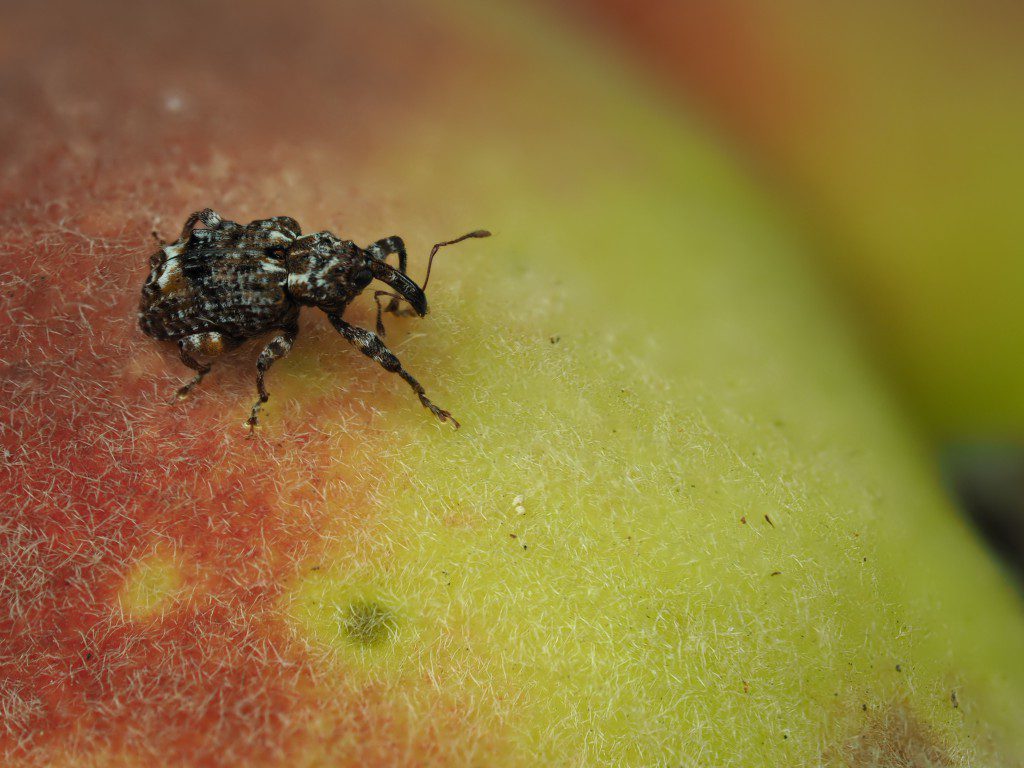
By Clint Thompson
Southeast peach producers have a handle on plum curculio management. Brett Blaauw, assistant professor at the University of Georgia (UGA) College of Agricultural and Environmental Sciences, wants to keep it that way.
That’s why the UGA specialist continues to encourage rotation of chemistries to prevent insecticide resistance from occurring. Pyrethroids are growers’ best option for management. But they need to be protected long-term.
“We want to rotate in some things to make sure that we don’t have issues with insecticide resistance. Also, the pyrethroids have negative impact on our beneficial insects so if we can rotate in little or softer chemistries like diamides … I’ll be the first to say they’re not the greatest product for plum curculio, but they do help knock down the populations. I think in rotation with pyrethroids, it will still give us enough management where we won’t have problems with the fruit.”
Plum curculio damage is not isolated to peaches. It will attack apples, pears and plums as well. The damage consists of small feeding punctures which cause scarring and malformation on the fruit as it develops. A female will slice a curved slit under the fruit skin where she will deposit her eggs.
Most peaches impacted by plum curculio early in the season will drop prematurely.
“It’s probably the no. 1 pest because if you don’t manage for them, you’ll have a problem. Thankfully, all the growers I work with manage for them and manage them well. Finding an issue with plum curculio is rare,” Blaauw said.
But how long will it stay that way?









